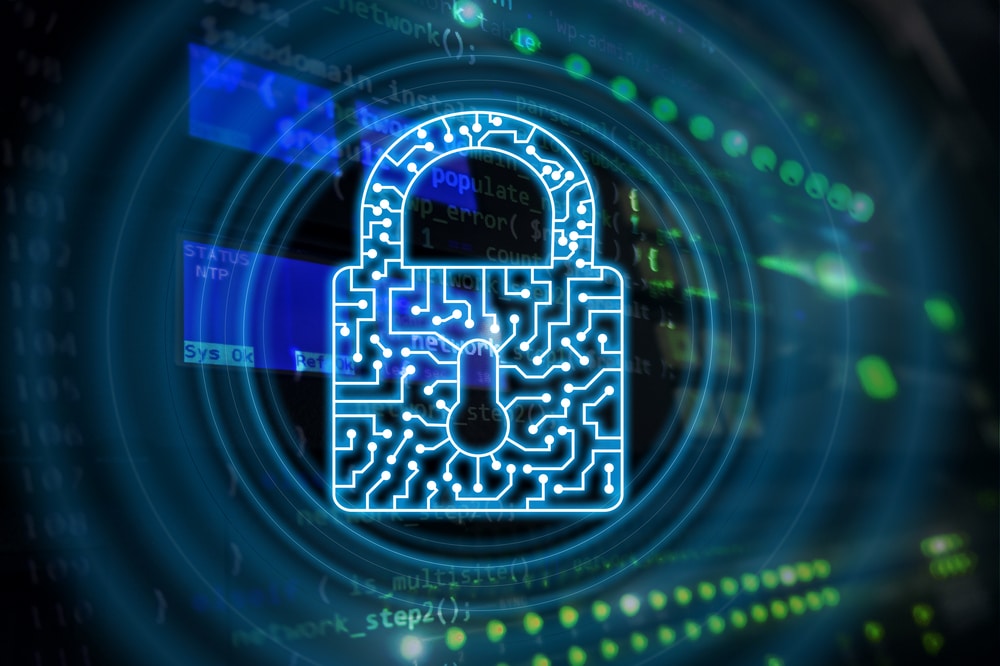
AI: Good or bad for the cyber threat landscape?
In recent months, the buzz surrounding AI technology has grown rapidly, due in large part to the release -- and subsequent zeitgeist moment -- of ChatGPT. A chatbot fueled by language modeling AI technology that is free to the public, ChatGPT has been the subject of seemingly endless discourse regarding its implications since its launch last November.
This type of AI technology is convincing and well… intelligent. It’s almost like a contemporary iteration on the concept of a search engine -- you can type in a prompt, and within moments you’ll receive a well-articulated, seemingly accurate response pulling from sources all over the web.

Only two percent of organizations feel confident in their cybersecurity strategies
While 75 percent of organizations have made significant strides to upgrade their infrastructure in the past year and 78 percent have increased their security budgets, only two percent of industry experts are confident in their security strategies, according to a new report.
The study, from critical infrastructure protection specialist OPSWAT, also finds most organizations have embraced public cloud hosting for their web applications, with an overwhelming 97 percent already employing or planning to implement containerization.

Hacking hybrid: Closing security gaps in a distributed workforce
When, where, and how we work has evolved. And in the past few years, the rise of flexible working patterns has helped improve employee wellbeing and created new opportunities to innovate. According to the Office of National Statistics, 44 percent of people in the UK work in a hybrid model -- making it almost as common as commuting to the office.
At the same time, these new freedoms have ushered in new priorities for security teams. Securing the enterprise is now more complex because the perimeter has become blurred. To address this, focus must be put on securing endpoints, such as PCs and printers -- the "ground zero" for most attacks. New cybersecurity strategies are needed to prevent, detect, and contain cyber-threats, but also enhance remote PC management to mitigate the risks associated with lost or stolen devices.

Brave Browser is ending behind-the-back port scanning attacks
The next major version of Brave Browser, a Chromium-based browser with a focus on privacy, will prevent sites and apps from accessing local resources without user permission.
Most modern browsers allow access to local resources. In fact, many do not differentiate between local and remote resources, and do not include options to block access to local resources.

Blockchain and proptech are transforming real estate security
Infrastructure is becoming more vulnerable to cyber threats. Therefore, everyone from tech enthusiasts to real estate professionals must pay attention to how blockchain and proptech advancements change the game to keep stakeholders, business owners and tenants safe and sound.
Blockchain is a part of the proptech umbrella, but it encompasses so much -- and blockchain enhances it all.

Next gen SIEM: Unleashing the power of AI in cybersecurity
AI has been in the news over the past several months, but not everyone is welcoming it excitedly. Many renowned tech personalities have expressed their concerns over the risks associated with it and there are valid fears about artificial intelligence doing more harm than good. For example, there have been reports of AI helping cybercriminals produce less detectable malware.
It is reassuring to know that cybersecurity is among the early adopters in harnessing the benefits of artificial intelligence. Cybersecurity firms have been developing ways to integrate AI into their detection, mitigation, and prevention capabilities. Next gen security information and event management (SIEM), in particular, is gaining traction as organizations try to keep up with the growing aggressiveness and complexity of cyber threats.

Microsoft Edge now blocks spam notifications on the sites you visit
Notifications can be useful, but all too often they are used by websites to spam people. To help protect users against such irritations, Microsoft has announced new notification blocking for its Edge browser.
The company says it is aware that website notifications may not only be annoying, but can be misleading or even dangerous. The aim in block spammy notifications is to not only offer protection to users of Microsoft Edge, but also to help them to get the most out of notifications.

Three of the world's most expensive phishing attacks... and how they could have been prevented
A number of high-profile cyber-attacks in recent years have thrust cybersecurity back into the spotlight. In light of the HAFNIUM hack, cybersecurity has become a major focus for many businesses. Although the hack itself was not the result of human error, it was a wake-up call for organizations to make sure they were fully protected.
The UK's Department for DCMS’ Cyber Security Breaches Survey 2021 revealed that phishing is still the most common cause of cybersecurity breaches, accounting for 83 percent of all successful attacks.

TP-Link launches a trio of Matter-certified Tapo smart switches
Tapo, a TP-Link brand, launches three new Matter-certified devices today. The Tapo Mini Smart Wi-Fi Plug, Tapo Smart Wi-Fi Light Switch, and Tapo Smart Wi-Fi Dimmer Light Switch offer compatibility with all-certified smart home platforms, convenient LAN control, and multi-admin capability.
Matter brings a new level of convenience with smooth LAN control, enabling seamless communication between Matter-certified devices within a local area network, even if the home internet is offline. This direct device-to-device communication eliminates the reliance on specific forwarding devices or cloud services, ensuring a robust and reliable smart home ecosystem.

Wary of a recession? Increase your investment in cybersecurity technologies
Leading organizations in all industries have accelerated their digital transformation and change management over the past three years, and for a good reason. According to Deloitte, meaningful digital transformation initiatives can unlock up to $1.25 trillion in market capital across Fortune 500 companies, with similarly positive results demonstrated for mid-range and small enterprises.
The key word here is "meaningful." But what constitutes beneficial change management processes versus directionless spending?

Five ways your business can bridge the cybersecurity skills gaps to find and keep top talent
We hear a lot about the cybersecurity skills gap, which the latest research puts at 3.4 million globally. There are lots of reasons why organizations find themselves dealing with a skills deficit -- from an actual dearth of qualified talent to internal factors including turnover, lack of budget/competitive wages, limited opportunities for growth and promotion, and lack of training.
One aspect that is within a company’s control, but is often unremarked, is unrealistic hiring practices. While this can be a problem across all sectors -- after all, every business wants to be sure they get highly experienced people on board -- there seems to be a particular issue around cybersecurity hiring.

75 percent of people risk being hacked through poor password practice
New research into the password habits of over 8,000 individuals across the UK, France and Germany shows 75 percent of people don't adhere to widely accepted password best practices, putting themselves at risk.
The study from Keeper Security shows 64 percent are either using weak passwords or repeat variations of passwords to protect their online accounts. More than a third of people also admit to feeling overwhelmed when it comes to taking action to improve their cybersecurity.

Breaches decline as security culture improves
The latest Security Maturity Report, published today by ClubCISO, shows 76 percent of CISOs reported no material breaches over the past year, up from 68 percent in 2022.
Despite the difficult economic climate, heightened global tensions and the onset of new technology making cybercrime easier, 60 percent of those surveyed say that no material cyber security incident had occurred in their organization over the past 12 months.

6 key takeaways from the 2023 Gartner Security and Risk Management Summit
The annual Gartner Security and Risk Management Summit is always fertile ground for discovering the latest trends in cyber security, with this year being no exception. The 2023 event was held in early June, and central themes of this year's summit were the increasing complexity of managing cybersecurity adversaries, the increase in data breaches, and the heightened risk identity poses in an ever-evolving digital landscape.
One of the most significant takeaways from this year's summit is the role of Privileged Access Management (PAM) within the Cybersecurity Mesh. The Cybersecurity Mesh distributed architectural approach to scalable, flexible, and reliable cybersecurity control. The Cybersecurity Mesh allows the security perimeter to be defined around the identity of a person or thing, highlighting the critical role PAM plays in modern cybersecurity strategies. The shift to remote work, accelerated by the global pandemic, and the subsequent rise in cloud-based infrastructures, have further emphasized the importance of the shift from infrastructure-based perimeters to identity perimeters.

Download Debian 12 Bookworm Linux distro now and say goodbye to Windows 11 forever
Good news, fellow Linux nerds! After many months of development, the Debian project has finally released the latest stable release of its popular Linux-based operating system. Debian 12, codenamed "Bookworm," marks a significant milestone in the ongoing battle against proprietary operating systems, particularly Windows 11. Debian 12 offers a legitimate alternative that truly empowers users.
One of the standout features of Debian 12 is its commitment to long-term support. Thanks to the joint efforts of the Debian Security team and the Debian Long Term Support team, Bookworm will receive support for a generous five-year period. This ensures that users can rely on Debian 12 for their computing needs without the constant pressure to upgrade or migrate to newer versions.
